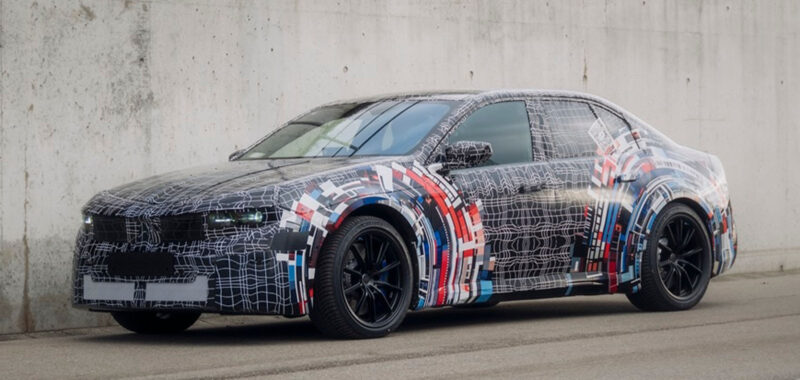“It seems more complicated, but it’s also more interesting if you control them with one ‘hand’ – not only in regards to accelerating or cornering but also braking and stabilising,” he said. “Then you have the possibility to create a new dimension of vehicle dynamics, and then you can counteract the increase in weight.”
His comments echo those of Alpine CEO Philippe Krief, who has said torque vectoring between multiple electric motors can create a feeling of “perceived lightness” that masks the true weight of an EV.
Importantly, each major component in a BMW M electric drivetrain will be bespoke to the sporting division. Much as it has always used heavily reworked versions of standard BMW engines, M will continue to use parts from its parent company as the basis for higher-output, performance-focused electric systems.
Van Meel said: “In the past, we had special engines like the S58. BMW had a B58 and we took the base engine, made modifications – new cylinder head, new production processes – and we can assemble it on the lines where the B58 engine is assembled, and the same was true with the S63 and N63 V8 engines.
“We use the same ideas and logic for developing our high-performance engines. We are in close cooperation with BMW AG to use their bases as a basis for what we are making at M.”
BMW’s red herring prototype exposed
Recent spy shots of a rakish, camouflaged BMW prototype sparked speculation that the M division’s first EV would be an angular sports coupé in the vein of the original M1, albeit higher-riding and with a bulkier bodyshell – but M boss Frank van Meel poured cold water on the notion of that car reaching production with an M badge.
The test mule has a motor at each corner, as per M’s modus operandi for electric sports cars, but here they are mounted in the wheels themselves, a solution that won’t work for the highest-output powertrains under development in Munich.
“You’re talking about hundreds of kilowatts,” said van Meel. “You can’t cool that with air.”
This headline-grabbing prototype is most likely to evolve into a fully functioning showcase of BMW’s future design cues and technological priorities as it ushers in a completely new generation of EVs from next year, beginning with replacements for the X3 and 3 Series.
While it’s unclear who supplied the motors for this mule, British firm Protean Electric has used a Land Rover Defender EV prototype to demonstrate that placing motors in the wheels can do away with axles, driveshafts and subframes. This in turn reduces mass and therefore cost, because smaller batteries can be fitted and packaged in such a way that needn’t make the EV so tall.

